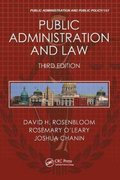Eco5 help in answering
I. A nn's production function is given by is q = KL 0.8K2 0.2!,2 where q is the quantity of output produced, I. is the amount of labor input used, and K is the amount of capital input used. Suppose the amount of capital is fixed at 10 units of capital in the short run. I. 2. Find this finn's short run (a) total product of labor function, (b) average product of labor function, and (c) marginal product of labor function. At what level of labor input usage does the marginal productivity of labor reach a maximum? How much output is produced at that point? Show and briey discuss how you arrived at your answer. Is the marginal product of labor ever negative for this production function? If so, when. If not why not. Show how you arrived at your answer. At what level of labor input usage does the average productivity of labor reach a maximum? How much output is pmduced at that point? Show and briey discuss how you arrived at your answer. At what level of labor input usage does the total productivity of labor reach a. maximum? How much output is produced at that point? Show and briey discuss how you arrived at your answer. What is the economic region of the short run production function you found in part I? Show and briey explain how you arrived at your answer. Calculate the output elasticity of labor when this rm uses the amount of labor at which its average product of labor is maximum. In a carefully labeled diagram, graphically illustrate this rm's total product of labor in the upper panel and the marginal product of labor and average product of labor in the lower panel using your results in parts 1 to 4. 16 POINTS Consider the standard Solow growth model. Let productivity be denoted by A and let the production function be Y=AF(KN). For simplicity, assume that there is no population growth (n = 0 so that N' = N). Let depreciation be denoted by dand the savings rate by s. a. Derive the per capita capital accumulation equation for =K/Nand the steady state level of capital per worker, $s. Please show the details of your derivation to earn points. Draw the Solow model graph showing the savings line and the depreciation line and marking the steady state level of k. b. Now, consider the "AK model" with production function Y = AK , where A is the exogenous productivity level. Again, assume that there is no population growth in the economy. Follow the similar steps in part a. to derive the capital accumulation equation in terms of capital per capita k. c. Based on the equations you derived in part b, draw a graph similar to that of the Solow growth model to show the steady state of the model in part b. If you cannot find such a steady state, please explain why. d. Recall that Solow growth model implies convergence in capital per capita. Does the model in part b has this feature?140 CHAPTER 8 normal. (Precise numerical answers are not nec- FIGURE 8. 1 1 essary here. In your graph, just show whether Short Answer Problem 8 (c) consumption increases or decreases but do not worry about specific numbers.) b. Draw a new graph showing the effect of an in- crease in Ms. Muffet's income if whey is an info- rior good. 7. Return to the initial circumstances in problem 5. Price of wine (dollars per bottle 2 Now, suppose that the price of curds doubles to $2 unit while the price of whey remains at $1.50 per unit and income remains at $12. . Draw the budget line before and after the price change. b. Why is the initial best affordable point (label it point a) no longer the best affordable point? c. Use your graph and show the new best afford- able point and label it d. What has happened to Wine (bottles per month] the consumption of curds? d. Use your graph to illustrate the substitution and b. The price of a bottle of wine falls to $1. The income effects from the price change. Label the price of a loaf of bread remains at $1, and point created by the substitution effect b. Carolyn's income is constant at $6. Draw her new budget line in Figure 8.10. How many FIGURE 8. 10 bottles of wine does Carolyn now buy? Short Answer Problem 8 (a) and 8 (b) c. Assume that Carolyn's demand curve is linear. In Figure 8.11 draw Carolyn's demand curve for wine. FIGURE 8. 12 Wine (bottles per month) Short Answer Problem 9 Income (dollars per week) Income-time budget line 13 Bread (loaves per month] 8. Figure 8.10 illustrates Carolyn's indifference map between bread and wine. 168 a. The price of a bottle of wine is $2, and the price Leisure (hours per week) of a loaf of bread is $1. Carolyn has $6 to spend on bread and wine. In Figure 8.10 draw her budget line. How many bottles of wine does 9. In Figure 8.12 indicate the initial hours of leisure Carolyn buy? this person enjoys. Suppose that the wage rate rises so that the person moves to another of the indiffer









